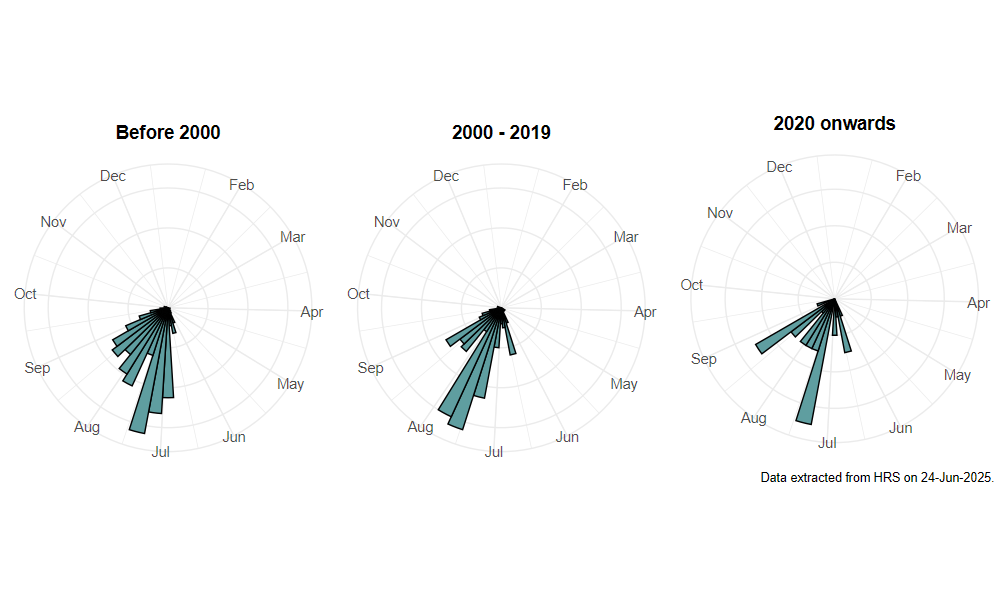Cheilosia longula (Zetterstedt, 1838)
Identification
Identification difficulty = 3. ![]()
![]() according to Ball & Morris, 20241
according to Ball & Morris, 20241
Biology
The larva develops in the fruiting bodies of large fungi including Boletus, Suillus and Leccinum. With up to 50 larvae having been found in a fungal cap, the fruiting body loses shape and forms a deliquescent mass on the ground. Adults are usually found along woodland (deciduous and coniferous) edges and rides, or in glades where they can often be found on sun-lit vegetation. A range of flowers including white umbels and yellow composites are visited.
Flight period
The following plots show the number of unique records per week excluding those reported to be of immature stages.

Distribution
This species is widely distributed throughout Britain. It mainly occurs in acidic, sandy locations, especially heathland and moorlands. There are comparatively few records from well-recorded parts of the English Midlands, which are generally less acidic and support richer soils.

Trends
The following plots show the Frescalo TFactor vs year and a map of the rescaled frequency (all records) for the species.
-
Ball, S., & Morris, R. (2024). Hoverflies of Britain and Ireland. WILDGuides (3rd ed.). Oxford: Princeton University Press. ↩